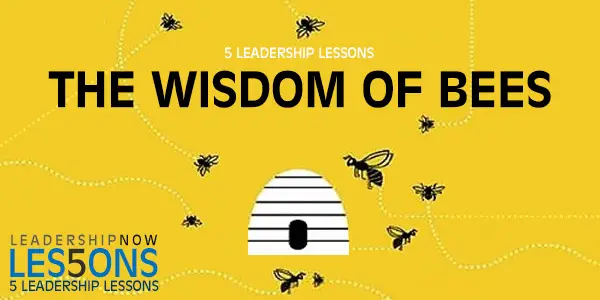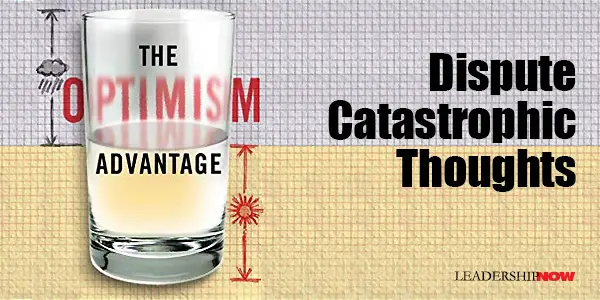 Leading Blog | Posts by Month |
 Leading Blog | Posts by Month |
08.31.10

LeadershipNow 140: August 2010 Compilation
Posted by Michael McKinney at 12:40 PM
08.30.10

Why Amish Businesses Thrive
STATISTICALLY, Amish businesses have a survival rate that is almost double other American businesses. Erik Wesner decided to find out why. After years of research and interviews, he has gathered together in Success Made Simple a number of transferable lessons on operating a business. I think it is a critical insight to their success that they don’t get the cart before the horse. Wesner writes, “Amish tend to keep in mind that business is first a means to realize core values, ones which don’t usually come to mind when thinking ‘business prosperity.’”Jonas Lapp (not his real name) is an Amish home-builder. Wesner says that “Jonas loves what he does. But you can see that it’s less the actual construction of homes or the financial payoff that drive him. Instead, it’s the chance to be a father figure to an employee who never had one, to form a friendship with a ‘customer’ who in the end never even does business with him, to do his small part to strengthen ties in his community.” In the beginning when he first started his business, Jonas struggled with fear; the fear of it not working out; of failure. The problem with fear Jonas told Wesner, is that when you are operating out of fear, “you’re not establishing relationships. You’re in it for what you can grab today. You’re after as much as you can get.” Not surprisingly, what grounds Jonas is his faith, operating from the premise that God will take care of him. “Amish lean on faith,” writes Wesner. “It’s a seemingly bottomless source of strength and security. Faith helps them see hope when tragedy strikes. Faith fosters gratitude in the fortunate. It’s a basic element of Amish life and, by extension, their approach to business.” It changes his perception of his role in the business and how it all relates to his life in general. Jonas neutralizes fear by shifting his focus. “If you’re a servant-leader, that means other people are gonna come first,” he explains. “People have to be very important to you. You’re not in it for the dollar anymore … you’re in it to help people. And the profits? They come.” Wesner adds, "He executes in the day-to-day, while the far-horizon focus frames each decision." A big part of Amish business thinking that comes through in everything is their family oriented approach. “Amish business thinking reflects community….In Amish America, the familial aspect comes preinstalled.” Employees are often regarded as extended family. “The Amish remember that their employee is usually a spouse to someone, and often a parent to a hefty handful—before being a worker.” Jonas Lapp says: If they’re married … or he has a fiancée or a girlfriend, if that fellow’s important in your business, let their helpmate know, that your husband is doing a wonderful job, and he’s very important in my business. Humility is practiced and demonstrated in their respect for others. If your goals are important enough for you to pitch in on the unpleasant tasks, then perhaps those goals will be important to your employees too. Again Lapp says, “I think a good boss won’t just stand there and say, ‘Hey, your piece belongs over there’; he’ll say, ‘I’ll help you put it there.’ I think people learn faster if you help them with their part.” Success Made Simple will help you rethink your approach toward business and people. It will encourage you to clarify your values and methodically apply them to everything you do. Gratitude. Family focus. Looking out for the other guy. When it comes to business, the Amish haven’t reinvented the wheel. One thing Amish excel at is applying certain time-honored principles—hard work, treating people fairly, providing quality goods and services—consistently. 
Posted by Michael McKinney at 10:23 PM
08.27.10

5 Leadership Lessons: The Wisdom of Bees
  
Posted by Michael McKinney at 09:41 AM
08.25.10

Dispute Catastrophic Thoughts
WARREN BENNIS wrote in Leader to Leader that “every exemplary leader that I have met has what seems to be an unwarranted degree of optimism—and that helps generate the energy and commitment necessary to achieve results.” Optimism says Bennis, “the sense that things generally work out well, creates tremendous confidence in oneself and in those around one.” Optimism helps leaders to be more resilient as they tend to believe in their capacity for self-control and the ability to overcome obstacles that come their way. In short, I would say, optimism is finding perspective. In The Optimism Advantage, Terry Paulson offers fifty truths for cultivating optimism beginning with “Life is Difficult.” (Perhaps not what you would expect from a book on optimism.) He writes, “If you want to be a true optimist, start by being a realist. Accept that life is difficult, and then get busy learning as much as you can about the challenges you face. Why? Because you’ve overcome problems in the past, you have every reason to believe that you’ve got what it takes to overcome whatever problems life deals you.”One important place to begin is with our negative thoughts and feelings. Optimists dispute catastrophic thoughts, those “feelings that everything is wrong and that nothing is going to change.” Paulson says that “means you have to be ready to argue with some of your negative beliefs.” Optimism is “about facing and taking advantage of reality—even unsettling reality. Expecting unrealistic results may actually increase your dissatisfaction….To an optimist, it’s all about resilience and maximizing your results.” Start with understanding what it is you’re saying to yourself that is causing a bigger problem in your thinking. Clarify it and then take a critical look at your beliefs and dispute them. Are they valid? Is there another way to look at this? Seek alternate explanations. Optimists ask, “Is there any less destructive way to look at this or explain what happened?” Look for causes that you can overcome and focus on what can be changed and then take action. 
Posted by Michael McKinney at 12:36 AM
08.23.10

There’s No Such Thing As Mature Companies
WE have all been told that businesses have a life cycle. It’s usually broken down into start-up, growth, maturity, and decline. But in terms of agility and sustainability, that’s not a helpful way to look at it. If you intend to lead people for the long-term, you need to consider a different outlook. London Business School professor Don Sull says that the secret to the fountain of youth is: “companies do not pass through life cycles, opportunities do. Most firms, particularly large organizations, oversee a diverse portfolio of opportunities that exist at different stages of the life cycle.” Even one-hit-wonders can find hidden opportunities if they look hard enough. To view what you are doing through the lens of the business life cycle, tends to make you myopic and limits your thinking. A perspective that emphasizes the opportunity life cycle encourages agility and openness in your thinking. Sull writes in The Upside of Turbulence, “There are no mature companies, only portfolios overloaded with mature opportunities. Organizations can avoid a corporate midlife crisis through portfolio agility—the ability to quickly and effectively shift resources, including cash, talent, and managerial attention, out of less promising units and into more attractive ones.” “To achieve portfolio agility,” writes Sull, “leaders should view their organization as an array of opportunities at various stages in the life cycle, paying attention to promising opportunities. The trick, then, is to keep your opportunities in balance. With that in mind, the following questions are helpful:
While this is directed at organizations, how might you apply this to your own personal life path? How might you keep your personal portfolio in balance and relevant to your world? 
Posted by Michael McKinney at 07:49 PM
08.16.10

IdeaSelling
IDEAS don’t sell themselves. In fact, the better and bolder they are, the more they need selling. Sam Harrison offers hundreds of tips to help you get your (creative) ideas sold and keep you centered in the process. IdeaSelling, says Harrison, is for “anybody who knows the pain and suffering of presenting an idea and having it slammed to the ground, picked over, or altered beyond recognition.” Simply saying, “They just don’t get it” is playing the victim. It doesn’t help you get your idea sold. One of the first reminders he gives us is one that is easily forgotten in the moment: It’s not about you. He writes: Decision-makers aren’t interested in your pain. A few others:

Posted by Michael McKinney at 11:52 PM
08.13.10

Whatever Happens Is Normal
One of the most valuable ideas I’ve ever discovered in terms of creating calm in the midst of a storm, and helping me keep my head when those about me are losing theirs, is the idea that whatever happens is normal. Not that whatever happens is always desirable or even acceptable, but that it’s almost always normal. A simple example of that would be having a flight canceled because of bad weather. Now this might wreck your schedule and cause you to have to completely rethink your plans, but, as a very, very frequent flyer, let me assure you that canceled flights are normal indeed. Because I see canceled flights as normal, I don’t go into a tailspin when it happens. I know what to do to either find an alternate way of getting there or, at the very least, minimize, the damage that may come from not getting where I wanted to be at the anticipated time. All around me I see people, some of whom are obviously seasoned travelers, going into complete state of panic and anger over what is really a very common occurrence. I wonder if they just haven’t been paying attention for the past 20 years. This idea that “whatever happens is normal” is what separates those who handle change effectively from those who go ballistic at the slightest deviation from what they had expected. We’ve all seen both types. On the one hand are the people who, if you tell them that there’s been a change in plans, policy, schedule, the menu, or virtually everything else, will quite completely lose it. They will either sink into a fuming funk or launch into a screaming rant. Either way, they don’t do well when the plans change. The other end of the spectrum are the people who, regardless of what kind of changes you throw at them, seem to handle problems almost effortlessly. These people tend to be among the most valuable in an organization. The value of a person with the ability to perform well under pressure cannot be overestimated in a world where constant pressure is the norm. Adapted from Becoming a Category of One by Joe Calloway.
Posted by Michael McKinney at 03:36 PM
08.11.10

5 Leadership Lessons: Scott Berkun on Public Speaking Even if you don’t speak professionally, you will find Scott Berkun’s Confessions of a Public Speaker, helpful in navigating any speaking situation. Berkun is refreshingly candid about his own mistakes and successes. It is an entertaining and practical behind-the-scenes look at the speaking profession; the good and the bad. He shares what has worked and what hasn’t in getting over the fear of speaking, creating a talk that people want to hear, and what to do when things go wrong. More Scott Berkun on Twitter / Web
Posted by Michael McKinney at 09:37 PM
08.10.10

Ten Truths about Leadership
IN the last 30 years James Kouzes and Barry Posner, authors of the highly regarded leadership classic The Leadership Challenge, have studied leaders all over the world. They understand leadership. The question they get time and time again is “What’s new in leadership?” They answer that while the context of leadership as changed dramatically, “the content of leadership has not changed much at all. The fundamental behaviors, actions, and practices of leaders have remained essentially the same since we first began researching and writing about leadership over three decades ago. Much has changed, but there’s a whole lot more that’s stayed the same.” That is probably the fundamental truth of leadership development. With that understanding, we can develop leaders in all contexts and weed out fact from fiction.Based on thirty years of research—more than one million responses to their leadership assessment—Kouzes and Posner have gathered together in The Truth about Leadership, the ten truths that have stood the test of time and they hold true both globally and cross-generationally. They devote a chapter to each of these ten concepts: Truth #1 You Make a Difference. Before you lead you have to believe that you can have a positive impact on others. When you believe you can make a difference, you position yourself to hear the call to lead. Truth #2 Credibility Is the Foundation of Leadership. If people don’t believe in you, they won’t willingly follow you. You must do what you say you are going to do. This means being so clear about your beliefs that you can live them every day. Truth #3 Values Drive Commitment. You need to know what you believe in because you can only fully commit to the organization or cause when there is a good fit between what you value and the organization values. This is true too, for the people you lead. Truth #4 Focusing on the Future Sets Leaders Apart. You have to be forward looking; it’s the quality that most differentiates leaders from individual contributors. You need to spend time reflecting on the future. Big dreams that resonate with others inspire and energize. Truth #5 You Can’t Do It Alone. Leadership is a team sport, and you need to engage others in the cause. You need to enable others to be even better than they already are. Truth #6 Trust Rules. To enlist others, you need trust. Build mutual trust; you must trust others too. Truth #7 Challenge Is the Crucible of Greatness. Great achievements don’t happen when you keep things the same. Change invariably involves challenge, and challenge tests you. It introduces you to yourself. It brings you face-to-face with your level of commitment, your grittiness, and your values. It reveals your mindset about change. Truth #8 You Either Lead by Example or You Don’t Lead at All. You have to go first as a leader. That’s what it takes to get others to follow your lead. Truth #9 The Best Leaders Are the Best Learners. Learning is the master skill of leadership. Leaders are constant improvement fanatics. Truth #10 Leadership Is an Affair of the Heart. Leaders love what they’re doing and those they lead. Leaders make others feel great themselves and are gracious in showing their appreciation. These truths should form the basis of any leadership development program. Even more, they are the motivation behind the right kinds of behaviors that go into the formation of good and sustainable leadership. There are no shortages of problems and opportunities…. Leadership is not about telling others they ought to solve these problems. It’s about seeing a problem and accepting personal responsibility for doing something about it. And it’s about holding yourself accountable for the actions that you take. The next time you see a problem and say “Why doesn’t someone do something about this?” take a look in the mirror and say instead, “I’ll be the someone to do something about it.” 
Posted by Michael McKinney at 08:09 AM
08.06.10

Do Your Goals Look Like a Variation of What You’ve Always Done? WE’VE all heard about SMART goals. The idea has been around for about 30 years. SMART goals are Specific, Measureable, Achievable, Realistic, and Timebound. Sounds reasonable. But Mark Murphy thinks they often “act as impediments to, not enablers of, bold action and actually encourage mediocre and poor performance.”
WE’VE all heard about SMART goals. The idea has been around for about 30 years. SMART goals are Specific, Measureable, Achievable, Realistic, and Timebound. Sounds reasonable. But Mark Murphy thinks they often “act as impediments to, not enablers of, bold action and actually encourage mediocre and poor performance.”
SMART goals seem to say, he contends, “Don’t push beyond our resources; don’t bite off more than you can chew; play it safe and stay within your limitations.” Maybe if we weren’t so focused on making sure our SMART goals were written correctly on our goal-setting forms, we might ask, “Is this goal fundamentally wimpy?” “Most organizations are pretty good at filling out forms correctly” says Murphy. “What we’re less adept at is making sure the content on those forms is gutsy and challenging enough to result in something great.” Perhaps our SMART goals are beginning to look like more of the same. There is the ever-present pull to keep doing things the way we have been doing them. There’s a feeling of safety there. We like to stick to what’s known. The result is that our goals can look like a variation of what we’ve always done. To be outstanding, to rise above the noise, we need challenging, we need inspiring, we need essential. To overcome inertia, Murphy recommends we set HARD goals. In Hundred Percenters he describes HARD goals as: Heartfelt, Animated, Required and Difficult. “Every business plan we write represents an opportunity. Every sales presentation, every customer interaction, every budget request, and every financial approval is a chance for us to push ourselves and our employees toward untold greatness.” HARD goals are: Heartfelt. Working for something bigger than oneself. “If you want to build a heartfelt higher purpose into your goals … make your goals NOBLE.” (Name a party Other than ourselves who will Benefit from this goal Like customers or End users.) Animated. One critical reason people don’t get excited about their goals is that “our goals typically sound sterile. When’s the last time you got so jazzed about the thought of hitting your budget target that you actually fantasized about the exact moment you would present the results to the team.” Help people to experience your goal. Imagine if Martin Luther King, Jr. had stood on the steps of the Lincoln Memorial and said, “Our goal should be that within the next 30 years, the incidents of hate crimes will be reduced by 63% and that the percentage of minorities living below the poverty line will be no higher than the percentage for any other racial group.” Those would be aspirational goals, to be sure. But inspirational? Not so much. Required. HARD goals do “more than paint a picture of something in the future. It also solves deep-seated pain. HARD goals aren’t just nice to do, they’re necessary to do.” If you’re going to set a HARD goal, you need to let people know why it is required. Difficult. It is possible to set a goal that is so difficult that it is demotivating, but that is rarely the issue. How difficult is difficult? Murphy asks two questions: What new skills (if any) will you have to learn to achieve these goals? And Do you think you can accomplish these goals? “If they aren’t learning all sorts of new skills, then your goals are probably not heard enough.…Hard goals are scary and force us to question our abilities. So if your employees knew they could accomplish the goals before they even started, try making [them harder].” When you announce your HARD goals, you’re going to see visible signs of perspiration and palpitations as folks listen…. Your employees 
Posted by Michael McKinney at 08:14 AM
08.04.10

Are You a Hundred Percent Leader?Research done by Leadership IQ indicates that 77% of leaders believe their employees are not giving 100%. Employees don’t seem to argue the point. 72% of employees admit that they in fact aren’t giving 100%.If you want your employees to give 100%, you need to be the kind of leader that creates Hundred Percenters—a 100% Leader. In Hundred Percenters, Mark Murphy, CEO of Leadership IQ, says that the “two most important differentiating factors in separating exceptional from average leaders are Challenge and Connection.” Challenge is the extent to which a leader pushes his or her people. Connection is the strength of the emotional connection they build with their people. You need to decide how much you want to challenge your people and how tight an emotional bond you want to build with them. The age-old question plaguing leaders is whether it’s better to be loved or feared. What our research seems to suggest is that while fear doesn’t lead to superior results, it’s also true that if being loved means you don’t push people, that’s not so great either. The balance seems to be that leaders should be loved, but they should be loved for pushing people to give 100%, not for coddling or appeasing them.The degree to which you challenge and connect with your people will determine the results you get. Based on their research, Murphy has divided leaders into four basic types: Appeaser, Avoider, Intimidator and 100% Leader. With the challenges leaders face, appeasing, avoiding or intimidating can seem like necessary approaches; the path of least resistance. But they don’t produce fully engaged and accountable people. In practice, the four types are described this way:  Working for the Appeaser. You’re given enjoyable assignments, you’re allowed to spend most of your time on work that plays to your strengths, your boss gives you lots of positive feedback, and your boss seems to care most about making sure you’re really happy. Working for the Intimidator. You’re given seemingly impossible assignments; you don’t feel like you’ve got all the skills you need to complete those assignments; when your boss gives you feedback, it’s usually pretty harsh and critical; and your boss seems to care most about achieving his goals no matter who’s with him at the end. Working for the Avoider. Your boss doesn’t really force too many assignments on you, you’re not really required to learn new skills, your boss lets you figure out for yourself how you’re doing, and your boss seems to care most about not getting in your way. Working for the 100% Leader. You’re given really challenging assignments, you’re required to learn new skills even in areas you might not consider to be your natural strengths, your boss gives you lots of constructive and positive feedback, and your boss seems to care most about pushing you to maximize every ounce of your potential. What kind of leader are you?
Posted by Michael McKinney at 11:34 PM
08.02.10

Bootstrap Leadership: Creating a Blueprint for Your Leadership DevelopmentLeadership is difficult but it is not complex. The most difficult part is you and me; getting ourselves to do what we know we need to be doing; interacting with people the way we know we should, but for all kinds of “good” and easily “justifiable” reasons don’t.The hardest person you will ever lead is yourself. Changing your personal behaviors and consequently your leadership style is not easy. It requires reflection, a vision of what should be and a plan, but it is ultimately up to you to make the changes. Bootstrap Leadership by Steve Arneson is an effort to guide you into doing just that. One of the most important capabilities of a leader is self-awareness. That is where this book rightfully begins by asking, “How are you showing up as a leader?” Arneson believes you need to begin with a definition of what good leadership means to you. “If you don’t know how to define the very thing you’re trying to do, how can you be successful at it?” Unfortunately, many leaders don’t know how to adequately define their role. He says that once you have created your own definition of leadership, you need to “become an evangelist for leadership” and share it with others. To start pulling yourself up by your own bootstraps and developing a customized leadership development plan, Arneson has provided a self-assessment of 50 statements that correspond to a chapter dealing with that particular need. After determining the areas you need to work on, he recommends that you tackle one each week. Bootstrap Leadership provides a very doable plan for improving your leadership. By looking at each of the 50 ideas, you will see areas where you can improve your weaknesses and refine and leverage your strengths. It is also valuable in helping others to develop their leadership potential. Invest these 50 ideas in yourself and others. Resist the temptation to say: “OK, I applied a few of the techniques this year, I’m good for awhile.” Keep stretching yourself.The best leadership advice? Become a better listener. “If you do nothing else to develop yourself, work on becoming a better listener.” It’s one of the “most effective ways to improve your leadership brand."
Posted by Michael McKinney at 11:46 PM
08.01.10

First Look: Leadership Books for August 2010Here's a look at some of the best leadership books to be released in August.




For bulk orders call 1-800-423-8273 "A bookstore is one of the only pieces of evidence we have that people are still thinking." — Jerry Seinfeld, Comedian
 Build your leadership library with these specials on over 160 titles. All titles are at least 40% off the list price and are available only in limited quantities.
Posted by Michael McKinney at 08:03 AM
|
BUILD YOUR KNOWLEDGE


How to Do Your Start-Up Right STRAIGHT TALK FOR START-UPS 
Grow Your Leadership Skills NEW AND UPCOMING LEADERSHIP BOOKS 
Leadership Minute BITE-SIZE CONCEPTS YOU CAN CHEW ON 
Classic Leadership Books BOOKS TO READ BEFORE YOU LEAD |
|